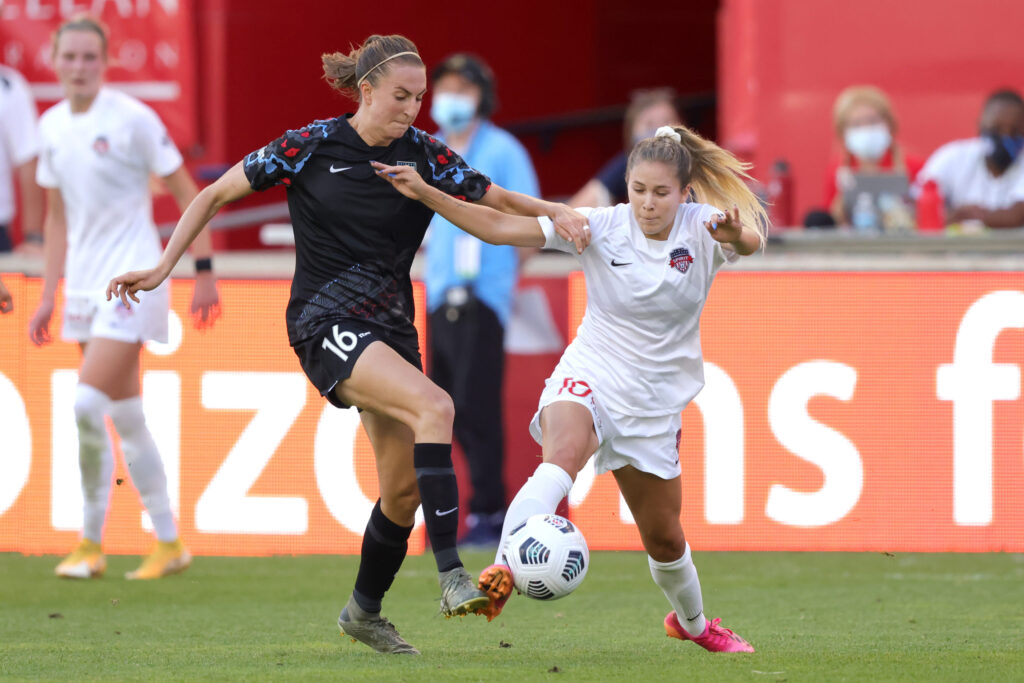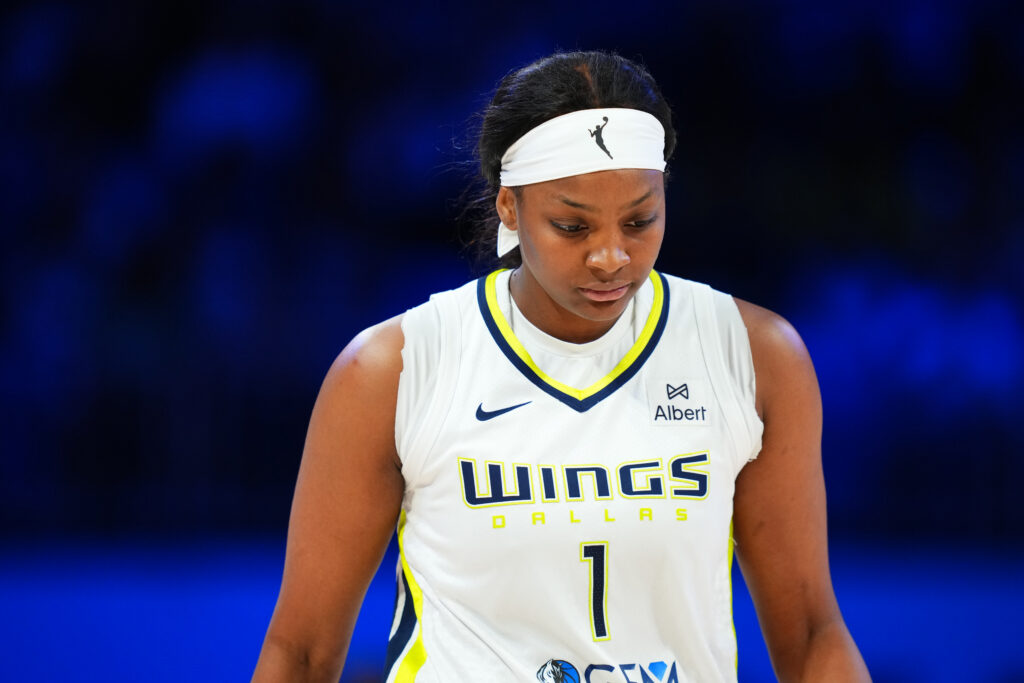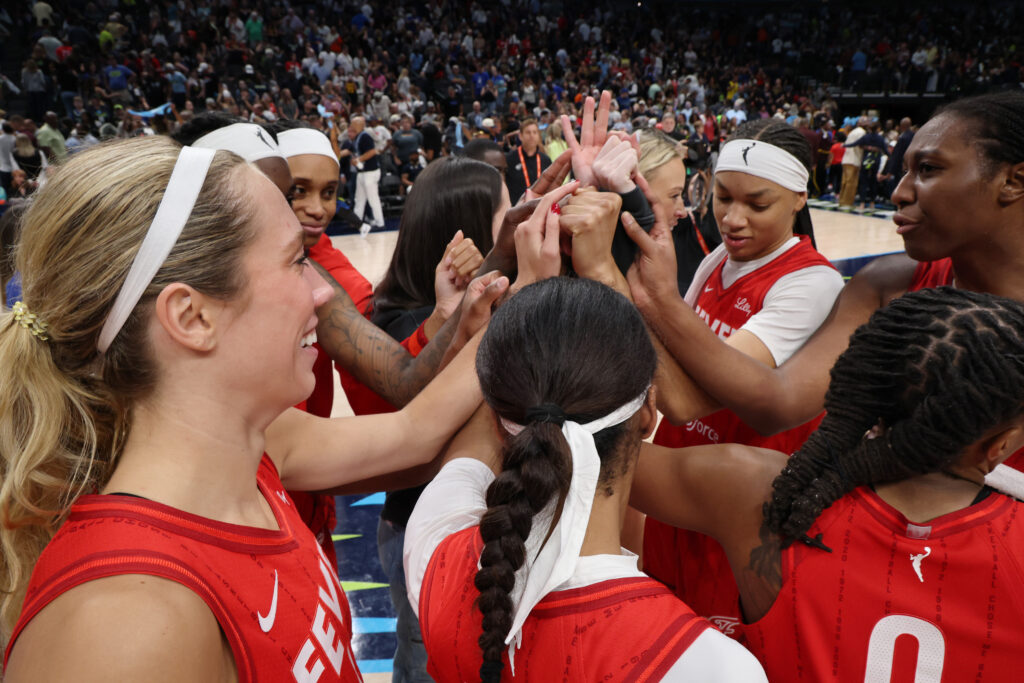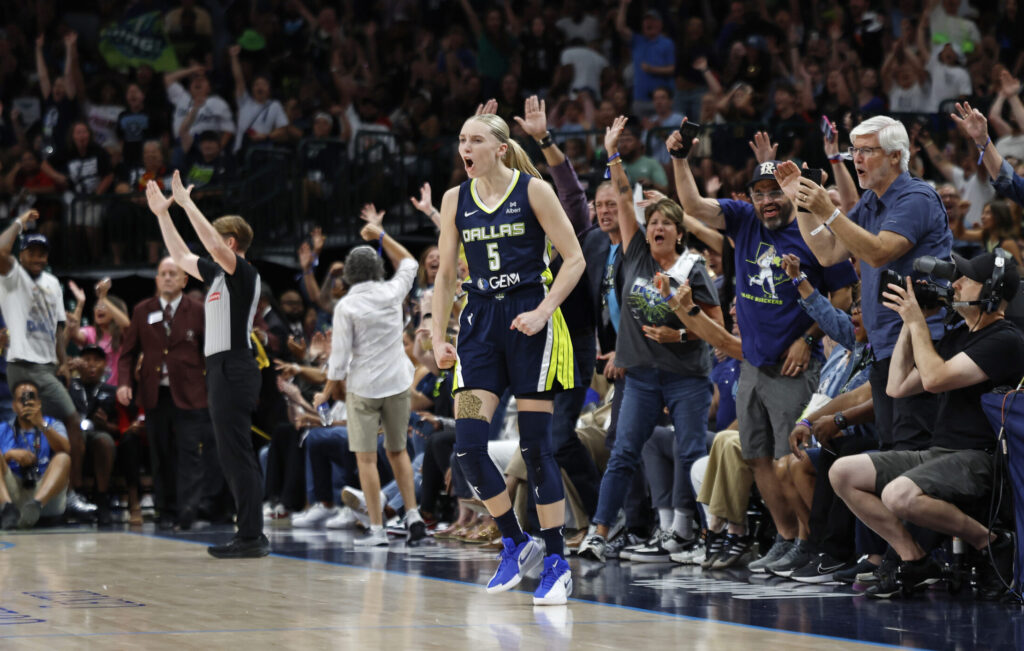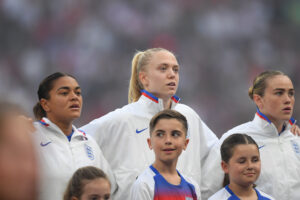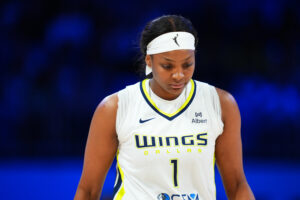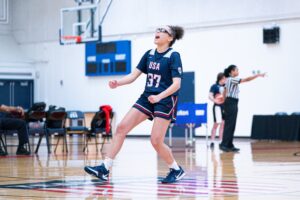LOUISVILLE, Ky. — When a truly excellent midfield controls the flow of a soccer game, their contributions can be so subtle as to be easily overlooked. For the midfields of the Washington Spirit and Chicago Red Stars, the lack of recognition is undercut by the internal understanding that they are the backbone of their teams.
The Red Stars have made an unlikely run to the final behind the smothering holding play of Morgan Gautrat and Sarah Woldmoe, with assistance from Danny Colaprico and Vanessa DiBernardo, the team’s No. 10. The Spirit have relied on the vision and veteran calm of Andi Sullivan, the technical ability of Dorian Bailey and the tirelessness of Ashley Sanchez.
Fans across the league are familiar with the end product: Golden Boot winner Ashley Hatch and Rookie of the Year Trinity Rodman have Washington soaring in the postseason, and Katie Johnson’s wonder strike allowed the Red Stars to sit on a lead in the semifinal and stifle the Portland Thorns into submission.
But how does the ball get into those spaces, and what happens when momentum swings the other way? What is it actually like in the trenches of an NWSL midfield?
In many ways, the midfields of the teams meeting in Saturday’s NWSL championship game have more similarities than they do differences. The players’ communication is constant, and mostly occurs when the unit is moving defensively rather than with the ball.
“The communication is straightforward: left, right, check your shoulder,” says Woldmoe, Chicago’s deepest-lying midfielder. “It’s not anything out of the ordinary or super special or anything like that. But it is, I would say, constant. It is nonstop. We definitely do hear each other, definitely do rely on each other.”
As the architect connecting the Spirit’s defense to their attack, Sullivan is a bit more vocal.
“I feel like I constantly am running my mouth, and for me, that’s both selfish and team-oriented,” she says. “Because I feel like it helps the team stay organized and see things that they might not have seen, but also helps me just get in flow. And I feel like if I make a mistake, I also rely on my communication to get me back into the flow of the game. It’s almost like I’m narrating.”
Communication is essential to any midfield moving as a cohesive unit, but the speed of play in the transition-heavy NWSL forces even the best midfielders to rely on instinct in the moment.
“If you’ve gotten the ball and you’re trying to think, you’re too late,” says Gautrat, who has become Chicago’s engine in possession and the key ball winner. “The best midfielders are thinking about what they’re going to do with [the ball] before they get it. And if you don’t, a lot of times either, one, you have to play backwards or, two, you get the ball taken from you.”
Both Woldmoe and Sullivan say they’re constantly working to read the game that’s unfolding in front of them.
“It’s more reading and instinctual. But then obviously, you’re updating that information as the game goes on,” Sullivan says.
“Read the game,” echoes Woldmoe. “It depends where the ball is, depends where we each are in that situation.”
“I feel like a lot of times, it’s important for us to know what’s around us all the time, 360 [degrees],” Gautrat concludes. “And taking your touch where the pressure isn’t coming from, which is tough because a lot of times, pressure’s coming from multiple sides.”
Sometimes, that pressure comes in the form of a crunching tackle all too common in the NWSL. Players on both sides are willing to sacrifice themselves in order to disrupt play, understanding that anything less than full commitment could actually result in injury.
“I feel like that’s also something that you have to train yourself not to think about, and just do,” says Colaprico, who stepped in to defend from an advanced position in the win over Portland. “Otherwise, you’re going to really hurt yourself or hurt the other person.”
Bailey, known for being calm on the ball under pressure, would rather avoid contact but isn’t afraid of it. “Sometimes it’s maybe just playing a little smarter instead of going to be so physical, so finding a way to maybe avoid contact once or twice, not every time,” she says with a laugh. “Sometimes you’ve got to hit someone.”
Every player at Thursday’s media day described the midfield as a battle that can often seem chaotic. But the tactics behind each rotational shift come with point-perfect intentions. If either team commits numbers forward, they have to be ready to immediately fall back into shape once an attack breaks down, looking to disrupt again and find their next chance.
“There’s a lot of work that goes into the midfield,” says Gautrat. “There’s the timing, and those [moments] are the ones that make the game and the teams tight.”
Chicago center back Tierna Davidson cites the protection of Seam Two, the area between the zones in and in front of Chicago’s 18-yard box, as the key to the Red Stars’ defensive scheme. With the dual No. 6s in front, Chicago’s center backs can fall back into space, making it hard for their opponents to penetrate straight down the middle (an area that Washington is known for attacking).
“That’s a space that attackers love to get into. That’s a space that a No. 9 or a No. 10 loves to get into,” Davidson says. “[They] turn and face and then dribble at us, and slip through balls to take shots, and it’s a very dangerous part of the field.”

With that area of the pitch covered, the Red Stars can match numbers elsewhere in the midfield and push teams outside to try to beat them on the flanks, where they also feel comfortable defending. As Gautrat puts it, “If you kind of take each other out of the game, then that just comes about. Who can do something on both ends that is special?”
Chicago’s midfield also has many years of experience playing together, which allows them a certain amount of fluidity when they do get to push forward.
Washington matches Chicago’s defensive organization with an emphasis on intention in possession.
“I feel like the more that midfield touches the ball, the easier my job is,” says Washington forward Ashley Hatch. “I feel like that was a piece that has been missing in the past couple years. We’ve always been good at keeping the ball, but keeping it with the purpose of keeping it and moving forward.”
The head coaches of both teams feel strongly that their midfields are well-balanced and can quickly list the reasons why. Chicago manager Rory Dames credits Gautrat’s ability to escape pressure with the ball, Woldmoe’s willingness to try 12-yard style passes, Dibernardo’s penetrating passes forward and Colaprico’s long-ball distribution. Washington interim head coach Kris Ward notes that Sullivan can place a pass from anywhere on the field, Bailey can turn away from pressure and dribble into open space and Sanchez has an awareness combined with a brashness that surprises defenders.
Both teams pride themselves on a sense of intuitive defensive rotation no matter the personnel, a tactic that can easily go awry if a person isn’t tracking off-the-ball movements. All too often in the NWSL, when one team struggles against the other, people point to the attacking team not executing properly. The more accurate reason, however, lies somewhere in between offensive execution and full-team defending off the ball.
Focusing less on the ball and more on the spaces in between is something the Spirit have been working on consistently since their mid-season managerial change.
“I mean, that’s defending, right?” says Spirit outside back Kelley O’Hara. “Obviously, the ball is what’s going to score the goal. But if you’re able to deter the other team from getting into the spaces that are dangerous, there’s less of a chance.”
Washington and Chicago each believe that constant work rate off of the ball is what sets them apart from their opponents, and they’re committed to settling into the grind of the championship match. But within that organization, they’ll also look to attack in transition and be smart with their timing.
“I think our attacking half has been unreal at taking those moments and knowing when to keep it and when to go,” says Washington center back Emily Sonnett.
“Also, I think our defensive [mindset], being able to handle knowing that they’re gonna sit and they’re gonna sit, and they’re gonna take those chances, those moments, and us being really organized,” adds O’Hara.
“Counter the counter,” Sonnett interjects.
“I think something that we’ve done better recently is just focusing on those countermeasures,” Sullivan says. “So when people are attacking, how can we eliminate their ability to get out and win it back higher? That’s something that I enjoy thinking about from that defensive mid position. Just thinking, what’s their way out?”
Just as it’s been for Washington and Chicago all season, the championship game will come down to who wins in the trenches. The Spirit will do everything they can to surgically remove Chicago’s control over the final, but the Red Stars are equally ready to battle for one another. Whoever executes that game plan better will most likely walk away with the franchise’s first title.
“We’ve learned, every single game this year, that you don’t just win by chance. You don’t just win by luck,” Woldmoe says. “You have to grind, you have to be disciplined, you have to be willing to get stuck in.”
For Colaprico, the strategy is simple: “When you see someone’s down, pick them back up, and keep everyone going for a full ninety minutes.”
Claire Watkins is a contributing writer at Just Women’s Sports covering soccer and the NWSL. Follow her on Twitter @ScoutRipley.
